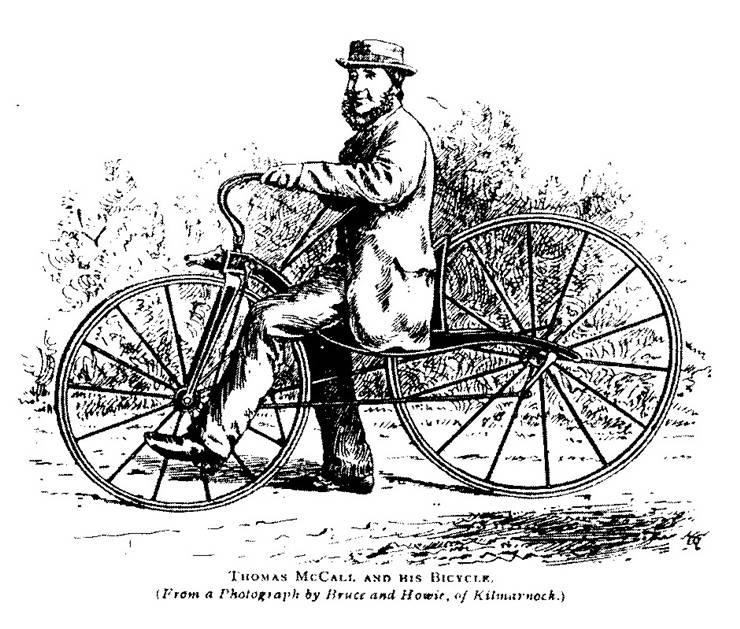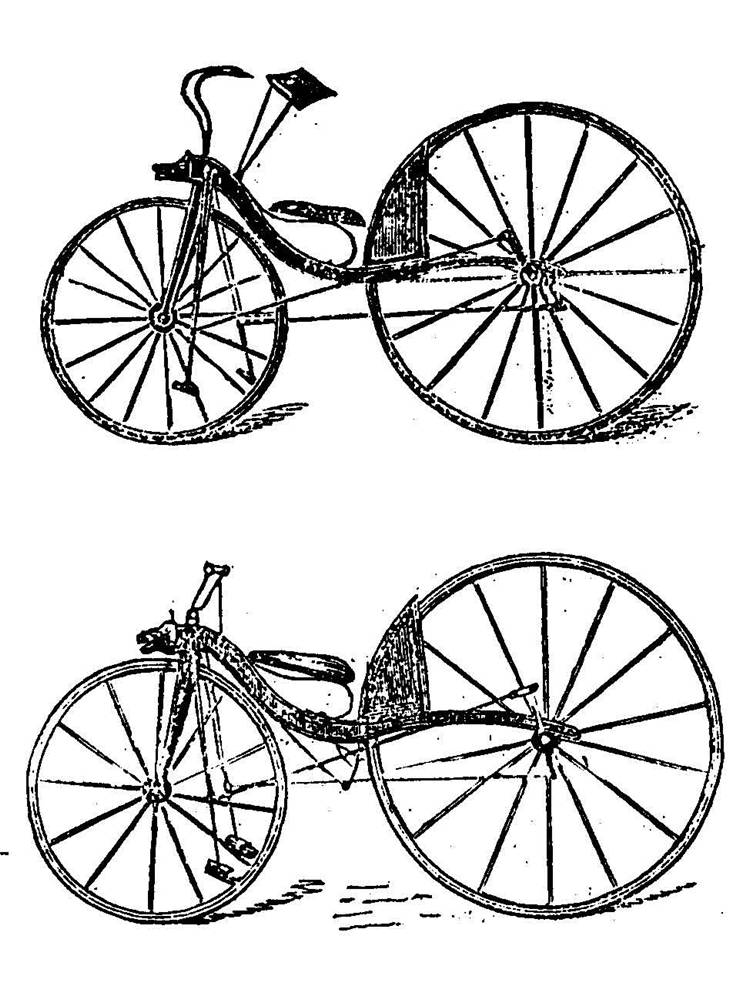Thomas McCall Biography
Before arrival of the first bicycle that were powered by the transmission chain, many inventors tried to enhance the initial designs of the velocipede that was introduced to the public by Pierre Lallement, Pierre Michaux and Olivier brothers in France in early 1860s. Those “Boneshaker” bicycles caused large craze for this new way of transportation in France and Europe, but their design left much to be desired for. Because of the obvious inefficiencies in placing rotary crank and pedals on the hub and axis of the front wheel, many inventors around the world started devising plans how to transfer the force from the pedals back to the rear wheel. The first successful attempts of this happened in 1869 when Scottish cartwright (woodworker skilled in making wagons, carts, wheels made from wood and metal) Thomas McCall managed to create several versions of the velocipede that featured levers and rods tossing a crank on the rear wheel. This design enabled easier transfer of force to both wheels, providing better riding experience than French boneshaker bicycles.
The public found out about bicycles created by Thomas McCall after rich corn-trader named James Johnston started promoting McCall’s bicycles as the invention of his uncle Kirkpatrick MacMillan. This promotion was most likely done with the consent of McCall who was in need of money, and how had for the need of this promotion created new and more optimized bicycle design that was better for driving. He used two of his old models to create new and improved replica, which Johnston promoted as a complete invention of Kirkpatrick MacMillan. However modern historians found many inaccuracies in the stories that James Johnston promoted, awarding the invention of the first back wheel powered bicycle design to its rightful owner Thomas McCall.
Replica of this improved velocipede design that Thomas McCall made for Kirkpatrick MacMillan is still presented to the public today at the Dumfries Observatory.

